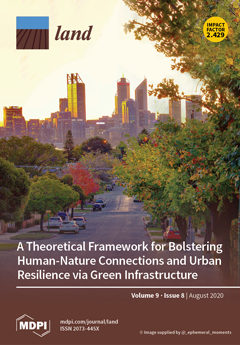Open AccessArticle
Bentonite-Based Organic Amendment Enriches Microbial Activity in Agricultural Soils
by
Rahul Datta, Jiri Holatko, Oldrich Latal, Tereza Hammerschmiedt, Jakub Elbl, Vaclav Pecina, Antonin Kintl, Ludmila Balakova, Maja Radziemska, Tivadar Baltazar, Petr Skarpa, Subhan Danish, Muhammad Zafar-ul-Hye, Tomas Vyhnanek and Martin Brtnicky
Cited by 9 | Viewed by 3385
Abstract
Bentonite-based organic amendments may have the potential to enhance soil microbial properties. The experiment was carried out from 2014 to 2017 comprising four treatments: NPK fertilizer (nitrogen, phosphorus and potassium mineral fertilizer as a control), NPK + cattle manure, NPK + bentonite, and
[...] Read more.
Bentonite-based organic amendments may have the potential to enhance soil microbial properties. The experiment was carried out from 2014 to 2017 comprising four treatments: NPK fertilizer (nitrogen, phosphorus and potassium mineral fertilizer as a control), NPK + cattle manure, NPK + bentonite, and NPK + combination of manure with bentonite (MB) to verify this hypothesis. The effect of treatments on seven different soil microbial properties was measured: dehydrogenase activity (DHA), bacterial phospholipid fatty acid content, fungal phospholipid fatty acid content, microbial biomass carbon (C
mic), 16S rDNA, 18S rDNA, and ammonia-oxidizing bacteria in soil. The results showed that solely bentonite treatment increases the bacterial and fungal biomass, which was further confirmed by the increased 16S rDNA and 18s rDNA gene copy numbers. The only significantly decreased values upon treatment with solely bentonite were recorded for DHA and C
mic. The ammonia-oxidizing bacteria population increased with the sole application of bentonite and reached its maximum value when bentonite was applied with manure. The MB treatment showed the highest value for all seven measured properties. In summary, the application of bentonite solely might increase or decrease the soil activity, but its addition, along with manure, always promotes an abundance of soil microorganisms and their activity. The co-application of bentonite with manure altered the soil microbial properties in a 3-year field experiment in favor of increased microbial biomass, which is beneficial for agriculture and environment and reveals the potential for the restoration of polluted lands.
Full article
►▼
Show Figures





